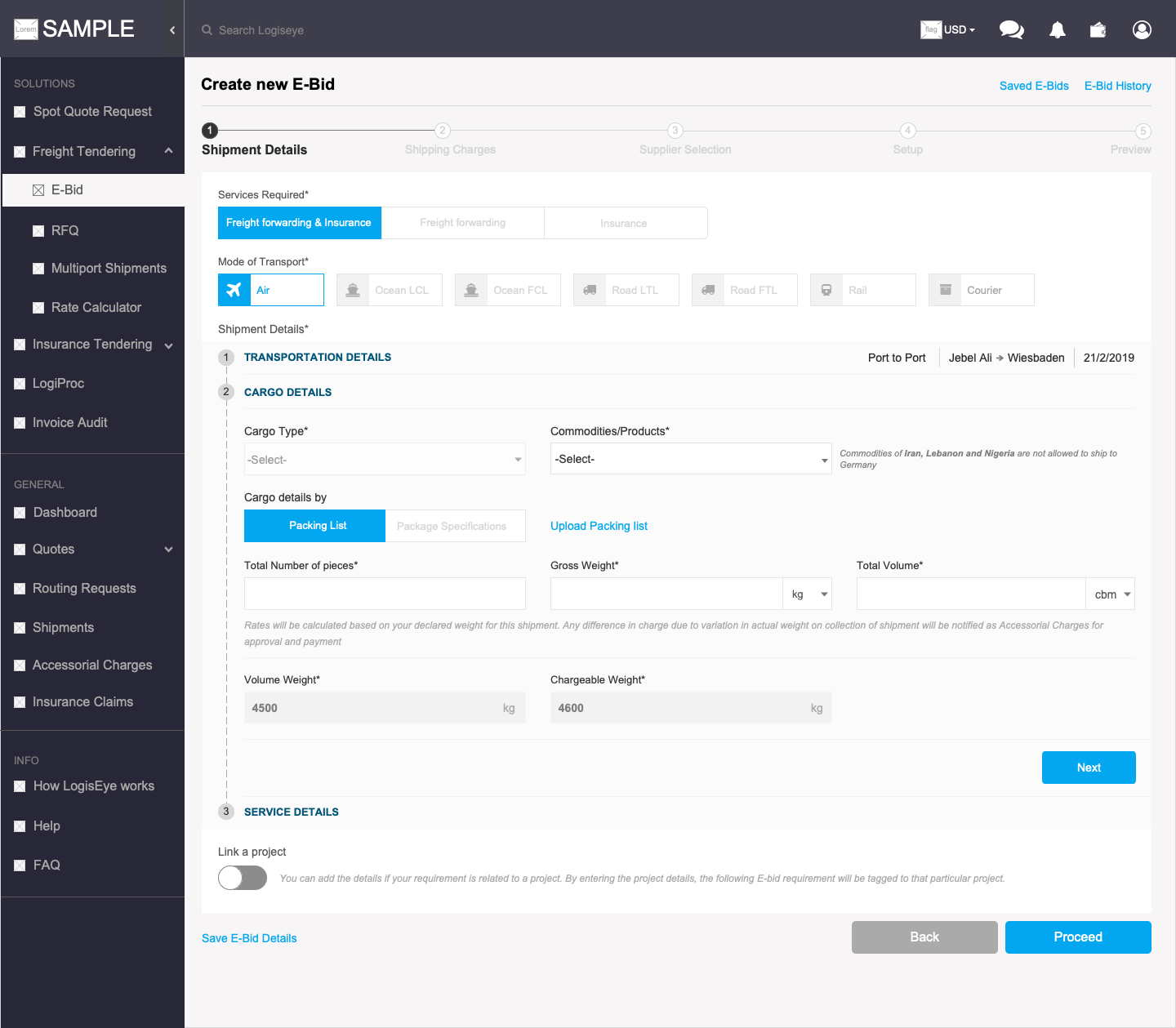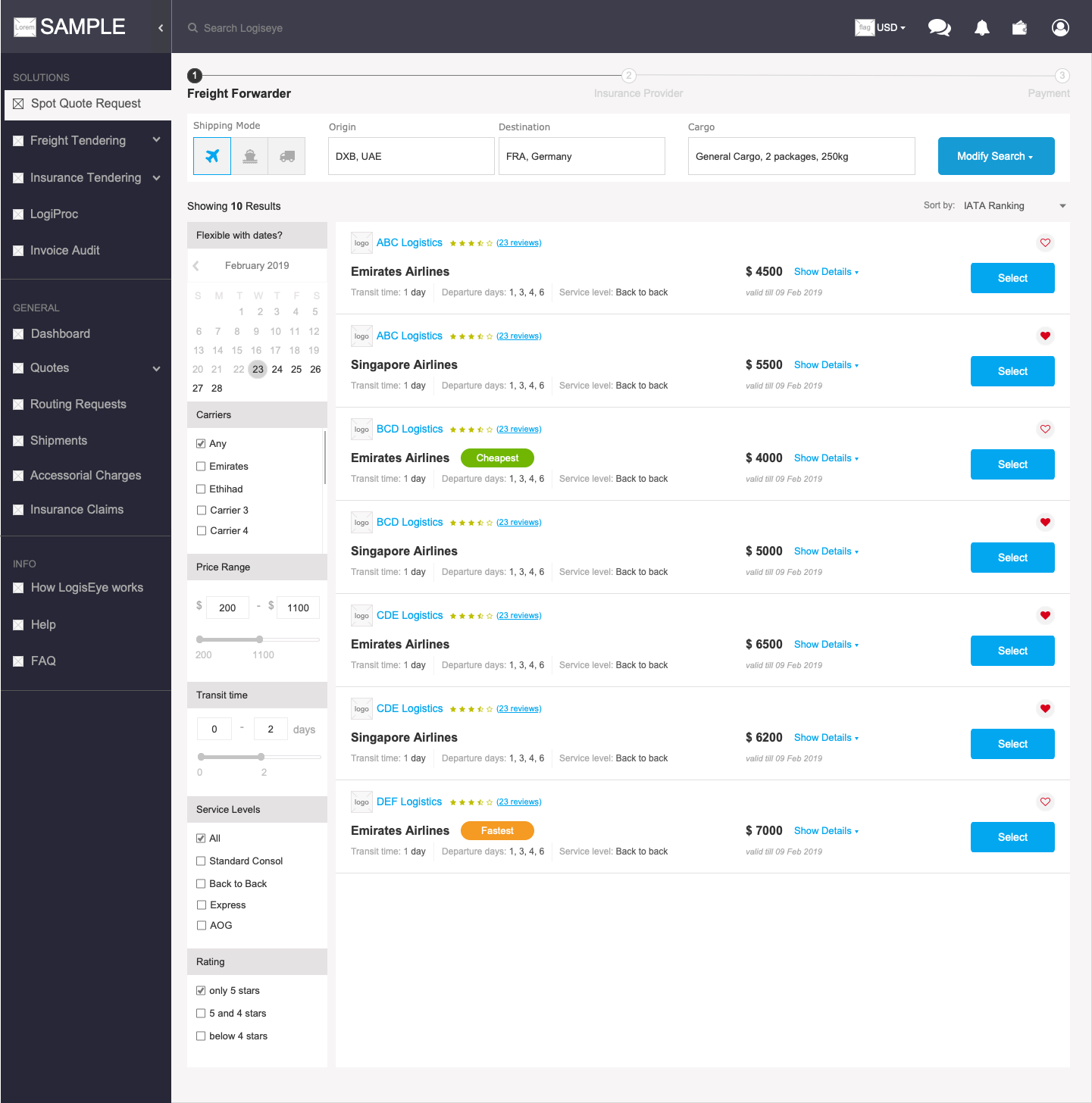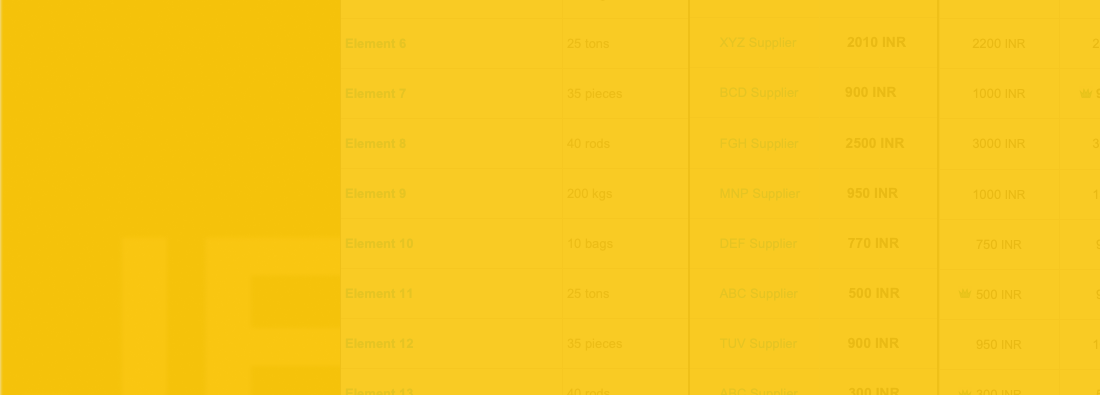Project Overview
The Logistics industry has long required a shift towards digital solutions, and the COVID-19 pandemic has hastened this transition. Nowadays, most people depend on digital platforms to handle their shipments.
However, the current market options do not offer a comprehensive solution for freight procurement. Our innovative approach, which combines the spot quote module and E-bidding module into a single platform, is revolutionary. This product meets the needs of both Exporters/Importers and Freight forwarders, streamlining the logistics process and ensuring transparency.
However, the current market options do not offer a comprehensive solution for freight procurement. Our innovative approach, which combines the spot quote module and E-bidding module into a single platform, is revolutionary. This product meets the needs of both Exporters/Importers and Freight forwarders, streamlining the logistics process and ensuring transparency.
Industry
Logistics
Duration
2019 - 2021
Target Users
Importers and Exporters, Logistics Service Providers
Role
During the planning and requirements-gathering phase, I worked as the sole UX designer. Afterwards, I teamed up with the client's product team to establish the necessary functionalities and components for the product. Later, I collaborated with another UX designer who had been added to the team to brainstorm ideas and create wireframes for the screens.
The logistics industry has long debated how to streamline and digitize its multifaceted operational procedures. While some digital products have surfaced to provide freight procurement solutions, many logistics companies still rely on archaic methods. Our discussions with users have enabled us to pinpoint some of their foremost concerns.
As an importer or exporter, it's essential that their needs are met with precision. These include
1. Promptly view and compare freight rates from multiple LSPs
2. Track shipments from pickup to delivery
3. Stay connected with the LSP throughout the shipment process
4. Participate in a competitive bidding process if necessary
1. Promptly view and compare freight rates from multiple LSPs
2. Track shipments from pickup to delivery
3. Stay connected with the LSP throughout the shipment process
4. Participate in a competitive bidding process if necessary
The Logistics service providers should,
1. Simplify and streamline the rate management process, allowing easy adjustments to thrive in the fluctuating market
2. Keep Importers/Exporters updated on shipment statuses
3. Provide an overview of all orders/shipments, including the ability to track each shipment
4. Participate in bids to establish a strong market presence
1. Simplify and streamline the rate management process, allowing easy adjustments to thrive in the fluctuating market
2. Keep Importers/Exporters updated on shipment statuses
3. Provide an overview of all orders/shipments, including the ability to track each shipment
4. Participate in bids to establish a strong market presence
Unfortunately, there aren't any existing products on the market that cater to these specific requirements.
DISCOVER: Contextual Inquiry
To create a new solution that benefits users, thoroughly evaluating the pros and cons of their current process is essential. Following the initial meeting with stakeholders, we conducted extensive research at their workplace.
We performed requirement collection and research while the users continued their usual activities. Through observing users in action and asking pertinent questions, we gained a comprehensive understanding of their process. As employees included both exporters/importers and LSPs, we gained insight from both perspectives. By establishing a positive rapport with the team and conducting interviews, we completed our research in three weeks.
We performed requirement collection and research while the users continued their usual activities. Through observing users in action and asking pertinent questions, we gained a comprehensive understanding of their process. As employees included both exporters/importers and LSPs, we gained insight from both perspectives. By establishing a positive rapport with the team and conducting interviews, we completed our research in three weeks.


The activity was conducted by UX Designer (my role) with support from the client marketing team
IDEATE: Task Analysis
Based on our interactions and observations with users, we aimed to determine the necessary steps to achieve their goals through Task Analysis.
We began by asking users about their primary objectives and their current methods for achieving them. Following this, we segmented these primary tasks into 4-8 smaller subtasks and represented them graphically through a layered task diagram. Our team reviewed and discussed this analysis before providing it to the client team.
We began by asking users about their primary objectives and their current methods for achieving them. Following this, we segmented these primary tasks into 4-8 smaller subtasks and represented them graphically through a layered task diagram. Our team reviewed and discussed this analysis before providing it to the client team.
Analysis of a major task of Freight Forwarders - Manage & Tr
The UX team and project manager collaborated with the client product team to conduct the analysis.
PS: Multiple iterations were necessary to ensure that the diagrams were accurate. We discussed and confirmed specific tasks with users to finalize the order of subtasks and tasks.
Our team initiated the product design process by creating low-fidelity sketches and testing basic features. Through productive collaboration and open discussion, we quickly gained a comprehensive understanding of the product. These finalized low-fidelity wireframes were then shared with the client's design team for feedback. After several iterations, feature designs were confirmed.
While the sketches were primarily for basic features, we created direct wireframes for the remaining functionalities.
While the sketches were primarily for basic features, we created direct wireframes for the remaining functionalities.
PS: The project designs were completed in two phases. Phase 1 involved Ebid and related screens, while Phase 2 focused on Spot Quote and related screens.
For Phase 1, our team created sketches and wireframes, which the client then reviewed. In Phase 2, our UX team collaborated with the Client Design and Product team.

Create EBid - Entering Shipment details

Create EBid - Entering Ebid Setup

EBid Detail - Bids list view for Exporter/Importer

Ebid Detail - Bids graph view for Exporter/Importer

EBid Requests list view for Freight Forwarders

Spot Quotes list view for Exporter/Importer

Quote Detail screen for Exporter/Importer

Shipments listing screen for Exporter/Importer

Shipment track & trace functionality for Exporter/Importer

Dashboard - Analytics view for Freight Forwarder
The testing phase is an essential aspect of any design process as it enables us to validate our ideas with users. In this project, we were fortunate to have access to the same users we had previously interviewed during our contextual inquiry. We tested our prototypes with these users and collected feedback as we completed each feature flow.
However, there were times when we needed to revisit our task analysis diagrams and conduct additional user interviews. For certain components, such as the e-bid awarding and LSP rate management screens, we went through 4-5 versions of wireframes before finalizing the design. The UX team, Project Manager, and Client Product Team conducted the testing.
However, there were times when we needed to revisit our task analysis diagrams and conduct additional user interviews. For certain components, such as the e-bid awarding and LSP rate management screens, we went through 4-5 versions of wireframes before finalizing the design. The UX team, Project Manager, and Client Product Team conducted the testing.
Collaborating with a skilled client product team and engaging with users through observation was an incredibly thrilling and rewarding experience. The product was released in early 2022 and lived up to its game-changing potential, as evidenced by the accolades it has received.
- One of the most promising startups in 2022 out of 9636 participants in the MENA Region by TAQADAM Startup Accelerator and Bootcamp
- Top 3 position for SmartLogisticsChallenge by UPS at Expo2020 Dubai


